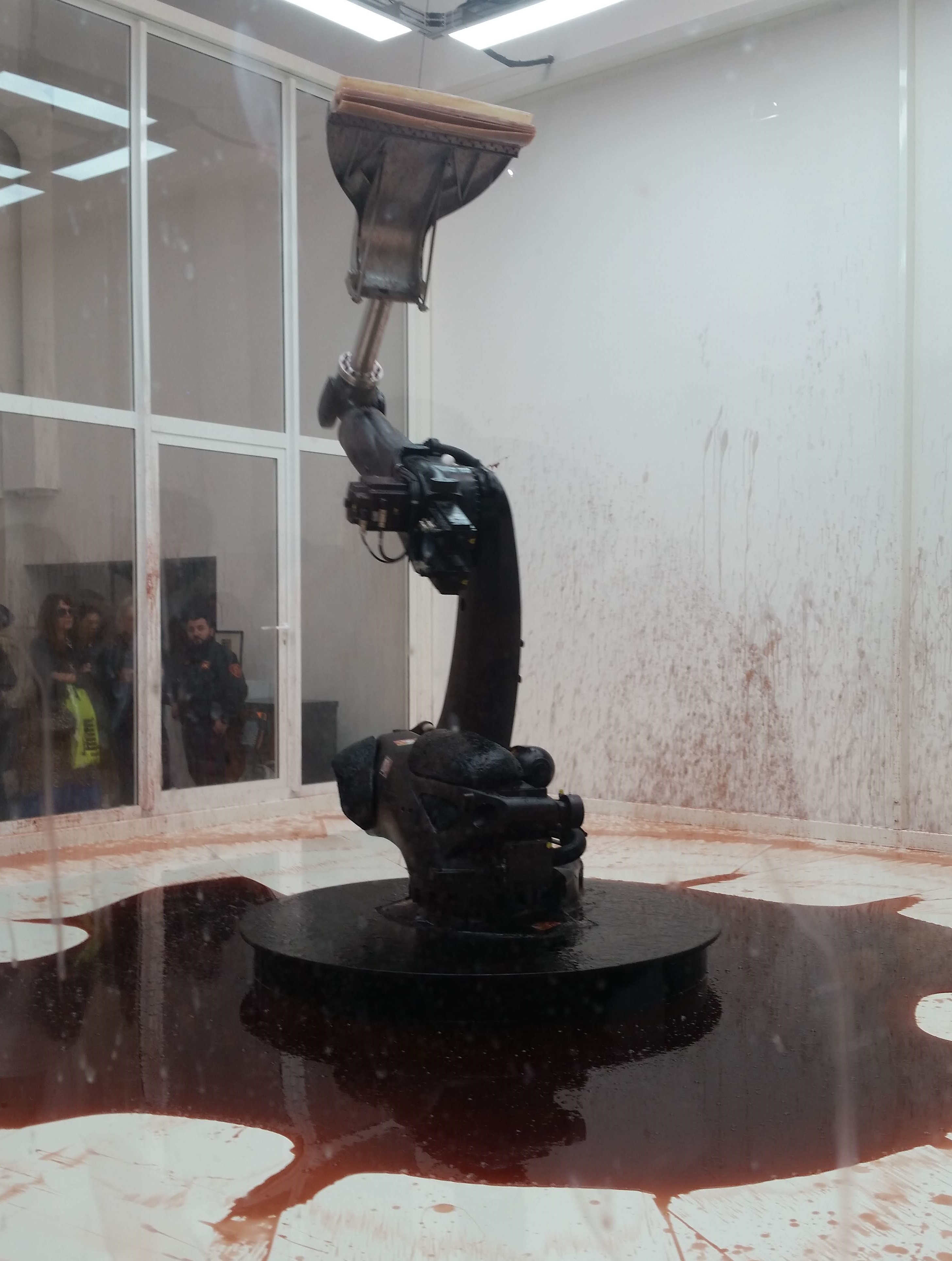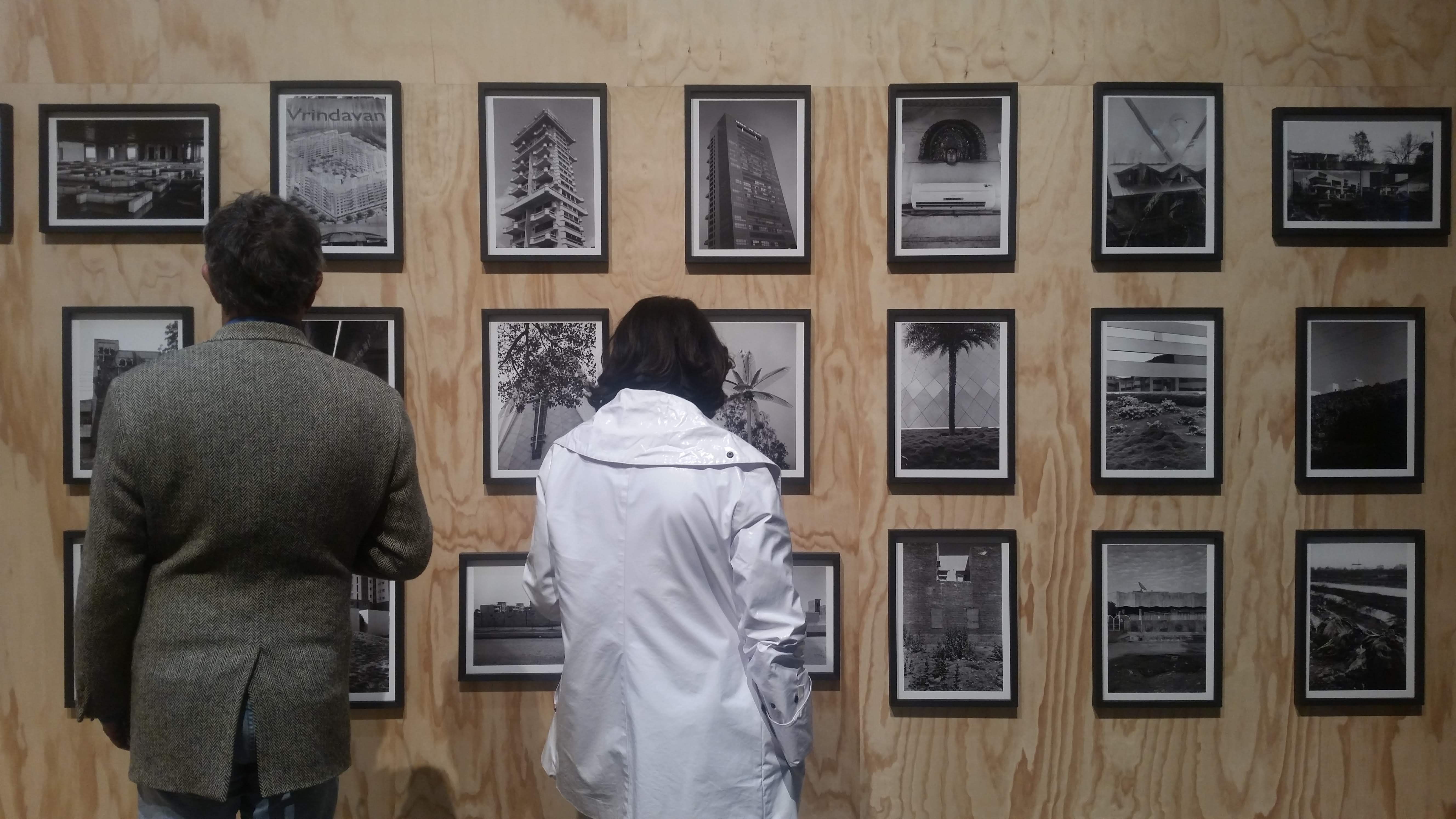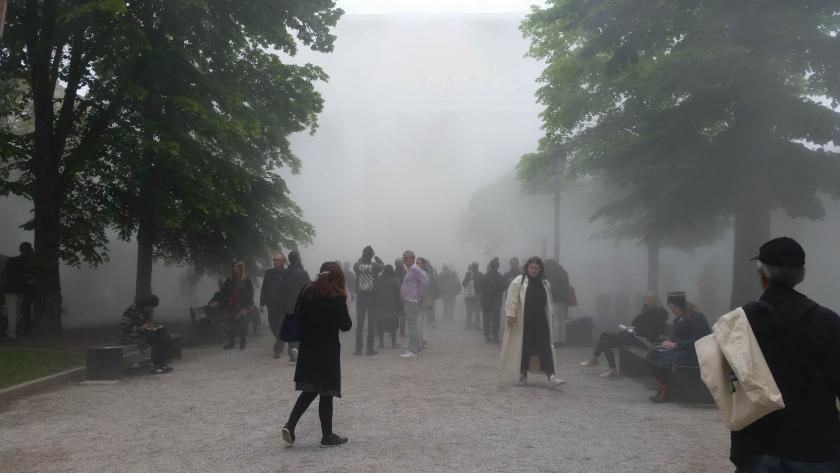There’s a barely disguised sense of threat running through the 2019 Venice Biennale. Of the 79 participating artists and groups, all are living and there’s a sharp sense that the purpose of the exhibition is to diagnose the ills afflicting the contemporary world. Colonial history, protest, ecological havoc, enslavement (of people, of machines), borders, murder, incarceration, poverty – all the fears of the day feature. Curator Ralph Rugoff's vision this year is clear, yet the show is not pessimistic and many of the works are graced by great dignity – though that is not to say the experience isn’t slightly gruelling.
Much has been made of the fact that Ruguff commissioned around half the artists twice for the two locations that make up the Biennale – once for the Arsenale and once for the Giardini. It’s an interesting approach that encourages pieces to be compared or seen as companions – yet perhaps for reasons of space more than accomplishment, pieces can feel as if they fall surprisingly short. Oneiric paintings by Michael Armitage in the Arsenale which take their stimulus from Kenyan 2017 election protests feel less powerful than his corridor of lyrical studies in the Giardini. While Njideka Akunyili Crosby’s collage paintings take up gorgeously large swathes of space in Giardini, it’s a single small self-portrait (Janded, 2013) in the Arsenale that really sears through.
 Paired works can also feel like lesser prototypes – for instance, the barely contained threat of Sun Yuan and Peng Yu’s overly powerful, occasionally helplessly indecisive machine arm delicately squigeeing red liquid into a Sisyphean pool (Can’t Help Myself, 2016, pictured right) far outstrips the whippy hissy fits of their marble-throned air hose installation made a year earlier (Dear, 2015). On the other hand, it sheds light on the development of their practice, which is in itself interesting.
Paired works can also feel like lesser prototypes – for instance, the barely contained threat of Sun Yuan and Peng Yu’s overly powerful, occasionally helplessly indecisive machine arm delicately squigeeing red liquid into a Sisyphean pool (Can’t Help Myself, 2016, pictured right) far outstrips the whippy hissy fits of their marble-throned air hose installation made a year earlier (Dear, 2015). On the other hand, it sheds light on the development of their practice, which is in itself interesting.
For some artists, however, this dual aspect really does work. Shilpa Gupta’s pairing of For, in your tongue, I cannot fit, 2017-2018 – an immersive installation that addresses the history of censorship through sculpture, audio and text – with her aggressively swinging gate (Untitled, 2009) shows her ability to use different artistic idioms to address related topics to vastly different affect. Teresa Margolles’s installation of Muro Cuidad Juárez, 2010 – a bullet-ridden, barbed wire-topped section of wall taken from outside a school in a neighbourhood rife with gun and drug crime – captures violence of a different kind and manner to that revealed in La Búsqueda (2), 2014, which focuses on femicide at the US/Mexico border.
It’s worth noting how present Rugoff’s curatorial hand is throughout. From Christian Marclay’s brutal video, 48 War Movies, 2019, set on continuous loop at the start of the Arsenale, he aims for a very specific tone and relation between Biennale visitors and the artworks. The labyrinthine partitions which break up the Arsenale’s unremitting corridor insist visitors make active decisions about what to see, and Zanele Muholi’s sumptuous portraits which are so spellbinding at small scale in Giardini are blown up in Arsenale, so that each giant portrait's eyeline is not only commanding but also interrogative.
 Though he largely refrains from outright shock, Rugoff does deploy it; his is a position of great power and deserves interrogation. The placement of Christoph Büchel’s Barca Nostra – which, before it became an artwork was a sunk coffin for over 800 people trying to cross the Mediterranean – at the end of the Arsenale and in front of bar-café seating is grotesque, savage and questionable. It attracts heated debate, and rightly so – Büchel’s motivations as much as Rugoff’s should be scrutinised, not least when in one sense the torn hull becomes an instrument for mocking people’s shallowness, ignorance and vanity (many selfies have already been taken). From the beginning of the exhibition, Rugoff has been clear on what kind of effect he intends to make. However difficult the dissonances are, and whether or not you agree with him, the impetus clearly comes from a genuine place. What's disappointing is that it’s most likely people who already care who'll pay attention, rather than those who might swell the ranks.
Though he largely refrains from outright shock, Rugoff does deploy it; his is a position of great power and deserves interrogation. The placement of Christoph Büchel’s Barca Nostra – which, before it became an artwork was a sunk coffin for over 800 people trying to cross the Mediterranean – at the end of the Arsenale and in front of bar-café seating is grotesque, savage and questionable. It attracts heated debate, and rightly so – Büchel’s motivations as much as Rugoff’s should be scrutinised, not least when in one sense the torn hull becomes an instrument for mocking people’s shallowness, ignorance and vanity (many selfies have already been taken). From the beginning of the exhibition, Rugoff has been clear on what kind of effect he intends to make. However difficult the dissonances are, and whether or not you agree with him, the impetus clearly comes from a genuine place. What's disappointing is that it’s most likely people who already care who'll pay attention, rather than those who might swell the ranks.
In a way, Barca Nostra bears comparison to Ryoi Ikeda’s spectra III, 2008/2019 – a blinding tunnel of white light which must be traversed to access other parts of the exhibition. Both pieces are overwhelming – one sensually and visually, the other ethically and emotionally. It seems that Rugoff is posing a question and a challenge, asking what the boundaries are that art can push, what art can really accomplish. It’s worth returning to Armitage, whose paintings suffer from being put to the service of Rugoff’s vision: a subsequent question arises – is it worthwhile?
Among the works I’ve left out are pieces of great beauty, nuance and ingenuity. Lara Favaretto’s casts capture choreographed movement and resistance at the precarious point of concrete’s setting; Tarek Atoui’s audio and sculptural installation The GROUND, 2018 intrigues, enthrals and soothes; Haris Epaminonda creates a world of convincing symbols that please both aesthetics and intellect – the same could be said of Anicka Yi’s symbiotic AI-bacteria ecosystems in Biologizing the Machine (terra incognita), 2019. Gauri Gill’s photographs of Rajasthan (pictured centre, left) capture a simultaneously derivative and original urban environment on the cusp of change; if you can, the performance programme is not to be missed (pictured above).
Outside of the Biennale, a gamut of interesting exhibitions are worth catching. These include Joan Jonas's "Moving Off the Land II" at Ocean Space, in the Church of San Lorenzo (purportedly the final resting place of Marco Polo) and Edmund de Waal's psalm, a dual installation meditating on historic and contemporary exile in the Ateneo Veneto and the Canton Scuola synagogue in the Jewish ghetto. A short but beautifully curated show of Helen Frankenthaler's paintings in Museo di Palazzo Grimani traces the development of her work through various iterations and Parasol Unit's "The Spark Is You", a group show of nine Iranian artists, feels exciting and timely.
The phrase “may you live in interesting times” is apocryphally attributed to a Chinese proverb, but this account may also be apocryphal. Whether or not you conclude the curation intrudes overly on the works, this is a distinctive and focused Biennale; its message is committed and it's clear the artists are, too.
- The 58th Venice Biennale runs to November 24
- Read more visual arts reviews on theartsdesk









![SEX MONEY RACE RELIGION [2016] by Gilbert and George. Installation shot of Gilbert & George 21ST CENTURY PICTURES Hayward Gallery](/sites/default/files/styles/thumbnail_125_x_125_/public/mastimages/Gilbert%20%26%20George_%2021ST%20CENTURY%20PICTURES.%20SEX%20MONEY%20RACE%20RELIGION%20%5B2016%5D.%20Photo_%20Mark%20Blower.%20Courtesy%20of%20the%20Gilbert%20%26%20George%20and%20the%20Hayward%20Gallery._0.jpg?itok=3oW-Y84i)





Add comment